When battling lymphoma, one of the most prevalent forms of cancer, access to affordable and effective treatment is paramount. In recent years, India has emerged as a beacon of hope for individuals seeking world-class healthcare without breaking the bank. In this article, we delve into the complex landscape of lymphoma treatment costs in India, shedding light on the factors influencing expenses, the various treatment modalities available, and strategies to make informed decisions regarding your healthcare journey.
Lymphoma is a kind of cancer that influence the lymphatic system, an important part of the body’s immune system. It originates in the lymphocytes, a type of white blood cell, and can manifest as Hodgkin’s lymphoma or non-Hodgkin’s lymphoma, each with its subtypes and characteristics. The complexity of lymphoma necessitates personalised treatment plans, which can significantly impact the price of care.
The cost of lymphoma treatment in India is influenced by a myriad of factors. First and foremost is the stage and type of lymphoma, as more advanced stages and rare subtypes may require more extensive and specialised treatments. Additionally, the choice of a treatment centre, geographical location, and the experience of medical professionals can all affect the overall expense. Other elements, such as the patient’s age, overall health, and potential complications during treatment, also affect cost determination.
Lymphoma treatment encompasses a range of modalities, each with its cost implications. Chemotherapy, radiation therapy, immunotherapy, stem cell transplantation, and targeted therapies are among the options available in India. Understanding the pros, cons, and costs associated with each treatment approach is crucial in making informed decisions about your healthcare journey.
India’s healthcare landscape is diverse, with a broad spectrum of healthcare providers, from public institutions to private hospitals and specialised cancer centres. Access to affordable healthcare is a critical aspect of lymphoma treatment in India. While public hospitals often offer more economical treatment options, private hospitals may provide a more personalised experience with state-of-the-art facilities. We explore these options in detail to help you navigate the healthcare system effectively.
The financial burden of lymphoma treatment can be alleviated through health insurance and various financial assistance programs like crowdfunding. Understanding how to leverage these resources can significantly ease the strain on your finances during this challenging time. We’ll discuss one of the best avenues for financial aid.
In this article, we equip you with the knowledge & tools to make informed decisions about your lymphoma treatment in India. By understanding the factors that influence costs, available treatment modalities, and avenues for financial assistance, you can confidently embark on your healthcare journey. Remember, you’re not alone, and affordable, effective lymphoma treatment is within reach in the vibrant and diverse landscape of Indian healthcare.
Read More: Impactguru hospital finder tool India
Table of Contents
Lymphoma Treatment Cost In India
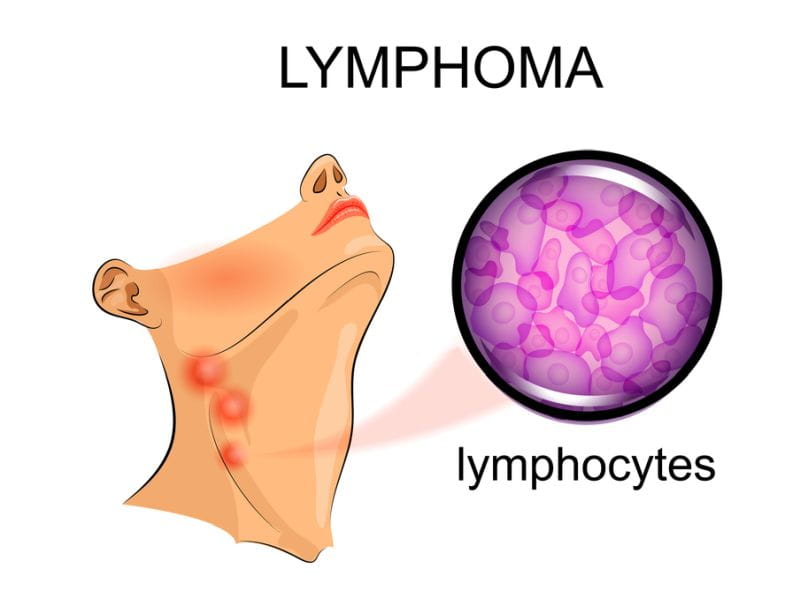
The cost of lymphoma treatment in India varies depending on the hospital, doctor and treatment plan chosen by the patient. India is one of the most affordable destinations for medical tourism, offering high-quality care at low prices. The average cost of lymphoma treatment in India ranges from Rs. 12,80,000 ($16,000) to Rs. 17,60,000 ($22,000) for Hodgkin’s lymphoma and from Rs. 5,00,000 ($6,000) to Rs. 6,00,000 ($8,000) for non-Hodgkin’s lymphoma. The cost of stem cell transplants in India ranges from Rs. 14,40,000 ($18,000) to Rs. 16,00,000 ($20,000). These costs are much lower than those in other countries like USA, UK or Singapore.
The average cost of lymphoma treatment in India ranges from Rs. 12,80,000 ($16,000) to Rs. 17,60,000 ($22,000) for Hodgkin’s lymphoma and from Rs. 5,00,000 ($6,000) to Rs. 6,00,000 ($8,000) for non-Hodgkin’s lymphoma.
Factors Affecting The Lymphoma Treatment Cost In India
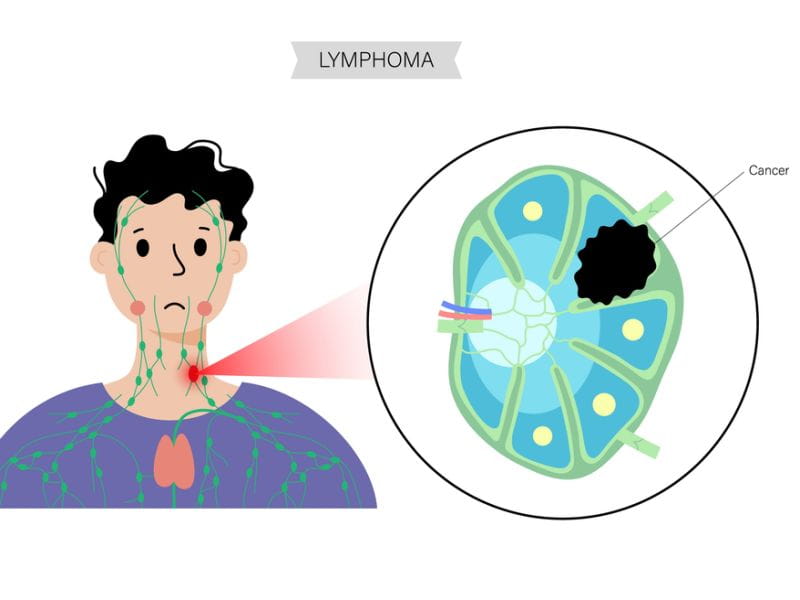
As in many countries, the cost of lymphoma treatment in India can vary significantly based on several factors. Lymphoma treatment costs can depend on various variables. Here are the key factors affecting lymphoma treatment costs in India:
1. Type and Stage of Lymphoma: The type and stage of lymphoma are significant in determining the treatment cost. There are two major kindsof lymphoma- Hodgkin lymphoma and non-Hodgkin lymphoma (NHL), and they have different treatment protocols. The stage of the disease (I, II, III, or IV) also influences the complexity and cost of treatment.
2. Treatment Approach: Lymphoma treatment can include various modalities such as chemotherapy, radiation therapy, immunotherapy, targeted therapy, stem cell transplantation, and surgery. The specific treatment plan recommended by the oncologist will impact the overall cost. More advanced treatments, such as immunotherapy or stem cell transplantation, tend to be more expensive.
3. Hospital and Facility Charges: The choice of hospital and its location can significantly affect the cost. Large, metropolitan hospitals with state-of-the-art facilities generally charge more for their services compared to smaller or rural hospitals.
4. Doctor’s Fees: The expertise and reputation of the treating oncologist can also influence the cost. Highly experienced oncologists may charge higher consultation and treatment fees.
5. Diagnostic Tests: The cost of diagnostic tests, such as biopsies, CT scans, PET scans, and blood tests, can add up to the overall expense of treatment.
6. Medications: The cost of medications, including chemotherapy drugs, immunosuppressants, and supportive medications, can be a significant portion of the overall treatment cost. Generic medications tend to be more affordable than brand-name drugs.
7. Duration of Treatment: The length of treatment, which can vary depending on the stage and response to therapy, affects the total cost. Longer treatment durations incur more expenses.
8. Complications and Side Effects: Some patients may experience complications or severe side effects during treatment, requiring additional medical attention and potentially increasing costs.
9. Insurance Coverage: Health insurance can be crucial in covering a portion of the treatment expenses. The extent of coverage, co-pays, and deductibles can impact the out-of-pocket costs for patients.
10. Geographical Variation: The cost of healthcare services can vary across different regions of India. Treatment in metropolitan areas like Mumbai or Delhi might be more expensive than in smaller towns or rural areas.
11. Patient’s Overall Health: A patient’s overall health condition and ability to tolerate treatment can influence the treatment plan. Some patients may require additional supportive care, which can increase costs.
12. Availability of Clinical Trials: Participation in clinical trials can sometimes provide access to cutting-edge treatments at reduced or no cost, but this depends on the availability of suitable trials.
13. Post-Treatment Follow-up: The cost doesn’t end with the completion of primary treatment. Regular follow-up visits and surveillance scans are essential to monitor the patient’s progress and detect potential relapse.
It’s essential for patients and their families to discuss treatment options, costs, and potential financial assistance programs with their healthcare providers and insurance companies. Additionally, seeking second opinions and exploring all available resources can help patients make informed decisions about their lymphoma treatment in India while managing associated costs.
Types Of Lymphoma Treatment In India With Their Costs
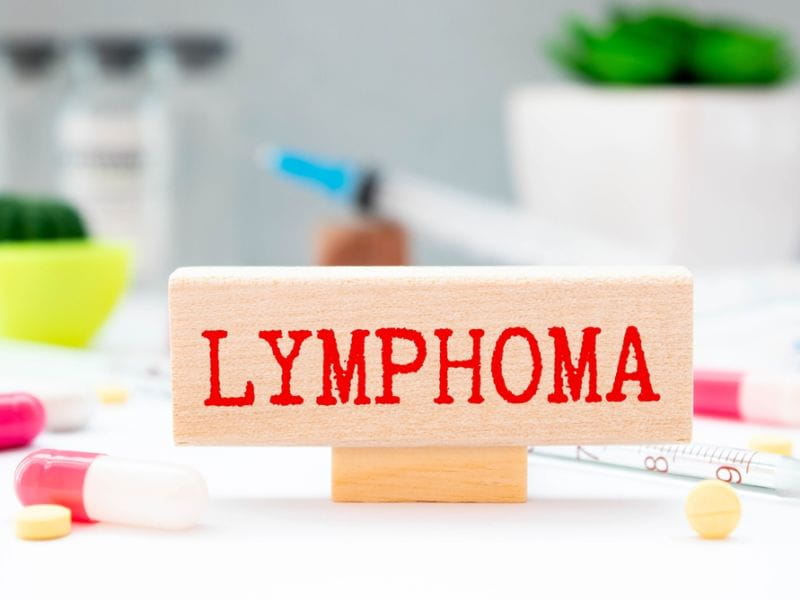
There are two main kinds of lymphoma: Hodgkin’s lymphoma & non-Hodgkin’s lymphoma. Both types have different subtypes, symptoms, diagnosis methods, and treatment options.
Chemotherapy is using drugs to kill cancer tumors or stop them from growing. It can be given orally or intravenously. The number and frequency of chemotherapy sessions depend on the type and stage of lymphoma and the patient’s response to treatment. The cost of chemotherapy in India starts from Rs. 20,000 ($250) per session.
Rituximab is a type of immunotherapy that targets a protein called CD20 on the surface of some lymphoma cells. Rituximab helps the immune system recognise and destroy these cells, making chemotherapy more effective. Rituximab can be used for different types of lymphoma, but it is especially beneficial for diffuse large B-cell lymphoma (DLBCL), the most common and aggressive form of non-Hodgkin lymphoma.
One of the standard chemotherapy regimens for DLBCL is called CHOP, which stands for cyclophosphamide, doxorubicin, vincristine, and prednisone. When rituximab is added to CHOP, it becomes R-CHOP, which has improved survival and cure rates for DLBCL patients. However, rituximab is also an expensive drug, and its cost-effectiveness may vary depending on the patient’s age, disease
stage, and other factors. Rituximab costs about Rs. 1 lakh ($1,300) per dose.
Radiotherapy uses high-energy rays or beams to kill cancer cells or shrink tumours. It can be given externally or internally. The number and duration of radiotherapy sessions depend on the type and location of lymphoma and the patient’s tolerance to treatment. The cost of radiotherapy in India starts from Rs. 3,20,000 ($4,000).
Antibody therapy is targeted therapy that uses antibodies to bind to certain proteins on the surface of cancer cells & trigger their destruction by the immune system or other drugs. It can be given intravenously or subcutaneously. The cost of antibody therapy in India varies depending on the type and dose of antibody used.
A bone marrow transplant (stem cell transplant) is a medical procedure that replaces diseased bone marrow with healthy stem cells from a donor to the patient’s own body. It can help restore the normal function of the immune system and blood cells after high-dose chemotherapy or radiotherapy. It can be done using autologous (self), allogeneic (related or unrelated donor), or syngeneic (identical twin) stem cells. The cost of a bone marrow transplant or stem cell transplant in India ranges from Rs. 14,40,000 ($18,000) to Rs. 16,00,000 ($20,000).
The above costs are estimates and may vary depending on the individual case and the hospital chosen. It is advisable to consult a qualified oncologist and get a personalised treatment plan and quotation before undergoing lymphoma treatment in India.
Diagnostic Tests For Lymphoma Treatment With Their Costs In India
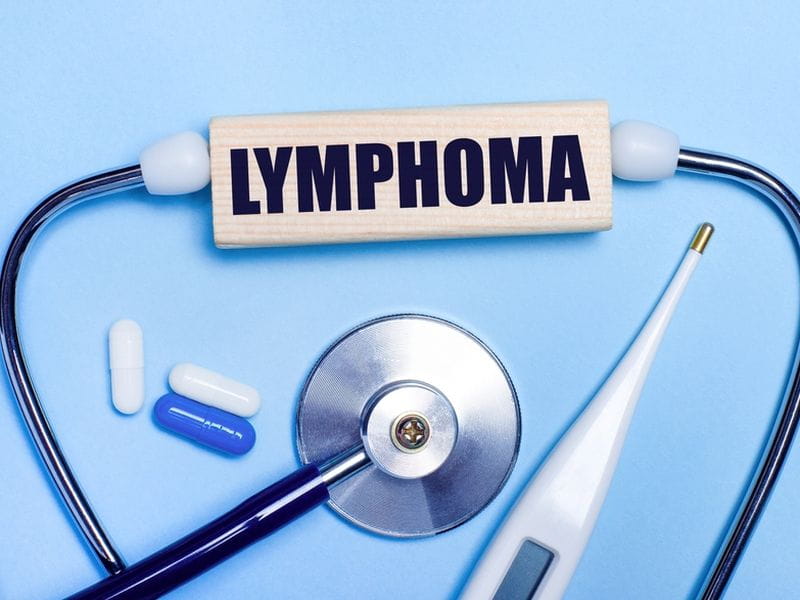
To diagnose lymphoma, doctors may perform various tests, such as blood tests, biopsy, imaging tests and bone marrow tests. These tests can help determine the type, stage and extent of the disease, as well as guide the treatment plan. The cost of diagnostic tests for lymphoma treatment in India may vary depending on the type and number of tests required, the location and reputation of the hospital or clinic, and the availability of insurance or government subsidies.
Here are some approximate costs of some common diagnostic tests for lymphoma treatment in India:
– Blood test: A complete blood count (CBC) is a basic test that measures the number & quality of white blood cells, platelets, & red blood cellsin the blood. A CBC can help detect signs of infection, inflammation, anaemia or bleeding disorders. A CBC may cost around Rs. 300 to Rs. 500 in India.
– Lymph node biopsy: It’s a medical procedure where a tiny sample of tissue is taken from a lymph node & evaluating it under a microscope for signs of cancer. A lymph node biopsy can help confirm the lymphoma diagnosis and determine its type and subtype. A lymph node biopsy may cost around Rs. 3000 to Rs. 7000 in India.
– Bone marrow test: Its a procedure that involves taking a small sample of bone marrow (the soft tissue inside the bones) & examining it for signs of cancer or other diseases. A bone marrow test can help decide if the lymphoma has develop to the bone marrow and affect its function. A bone marrow test may cost around Rs. 5000 to Rs. 10000 in India.
– CT scan: It’s type of imaging test that uses X-rays to develop detailed pictures of the inside of the body. A CT scan can help detect enlarged lymph nodes or organs, tumours or other abnormalities in the chest, abdomen or pelvis. A CT scan may cost around Rs. 5000 to Rs. 15000 in India.
– PET scan: A positron emission tomography scan (PET) is a diagnostic test that utilizes a radioactive substance (tracer) to indicate how cells and tissues work in the body. A PET scan can help measure the activity of lymphoma cells and determine if they are responding to treatment or not. A PET scan may cost around Rs. 15000 to Rs. 25000 in India.
These are some of the diagnostic tests for lymphoma treatment with their costs in India. However, these costs are only estimates and may vary depending on various factors. Therefore, you should consult your doctor before undergoing any test and compare prices from different sources.
About Lymphoma: Types, Symptoms, Causes, & Best Hospitals
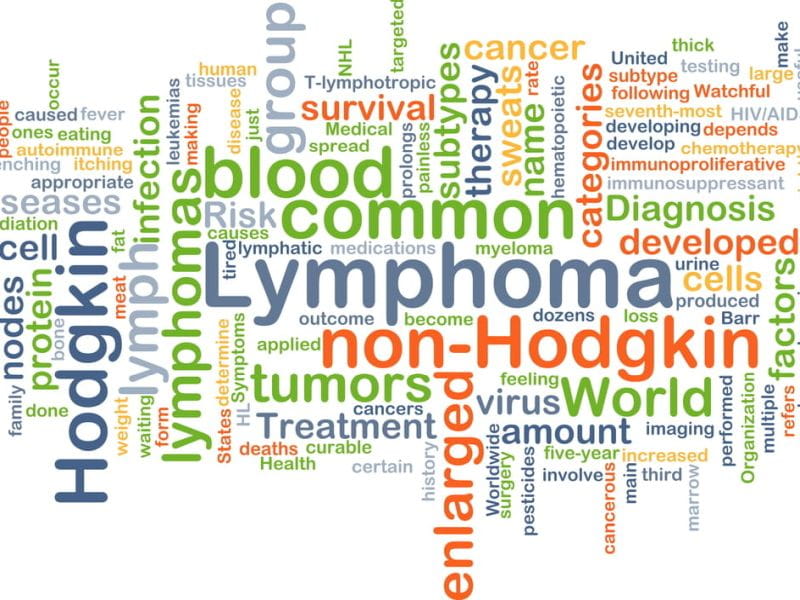
Lymphoma originates in the lymphatic system, which is a vital part of the immune system. It occurs when certain white blood cells known as lymphocytes, which play a crucial role in fighting infections, mutate and grow uncontrollably. Lymphoma can affect various body parts, including lymph nodes, spleen, bone marrow, & other lymphatic tissues. There are several types of lymphoma, with two primary categories: Hodgkin lymphoma and non-Hodgkin lymphoma (NHL).
Types Of Lymphoma
1. Hodgkin Lymphoma (HL): This type of lymphoma is characterised by a specific type of abnormal cell called Reed-Sternberg cells in lymph nodes. Different subtypes of Hodgkin lymphoma include classical Hodgkin lymphoma and nodular lymphocyte-predominant Hodgkin lymphoma.
2. Non-Hodgkin Lymphoma (NHL): Non-Hodgkin lymphoma is more common than Hodgkin lymphoma and comprises a diverse group of lymphomas. It can be further divided into many subtypes based on the type of lymphocyte affected (B-cells or T-cells) and their characteristics.
Symptoms Of Lymphoma
The symptoms of lymphoma can vary depending on the type and stage of the disease, but some common symptoms include:
1. Swollen lymph nodes: Enlarged, painless lymph nodes in the neck, armpits, or groin are a common early sign of lymphoma.
2. Fatigue: Unexplained and persistent tiredness and weakness.
3. Fever: Recurrent, unexplained fevers that may come and go.
4. Night sweats: Drenching night sweats unrelated to room temperature or physical activity.
5. Weight loss: Unexplained and unintentional weight loss.
6. Itching: Generalized itching without a known cause.
7. Loss of appetite: A decrease in appetite & a feeling of fullness even after eating small amounts.
8. Breathlessness: Difficulty breathing, mainly if lymphoma affects the chest or mediastinum.
9. Pain: Pain in the affected lymph nodes or other parts of the body, depending on the location of the lymphoma.
Causes And Risk Factors
The exact causes of lymphoma are not well understood, but variety of risk factors have been identified, including:
1. Age: Lymphoma can occur at any age, but the risk increases with age. Hodgkin lymphoma is most common in young adults, while non-Hodgkin lymphoma is more found in older adults.
2. Weakened Immune System: Individuals with weakened immune systems, like those with HIV/AIDS, organ transplant recipients, or individuals taking immunosuppressive drugs, are at higher risk.
3. Infections: Certain infections, such as the Epstein-Barr virus (EBV), Helicobacter pylori, and human T-cell lymphotropic virus (HTLV-1), have been associated with an increased risk of lymphoma.
4. Family History: There may be a genetic predisposition to lymphoma, as a family history of the disease can increase the risk.
5. Chemical Exposures: Exposure to certain chemicals and pesticides may increase the risk of lymphoma, although the evidence is not always conclusive.
6. Autoimmune Diseases: Some autoimmune diseases, such as rheumatoid arthritis and Sjögren’s syndrome, have been linked to an increased risk of lymphoma.
It’s important to note that while these factors may increase the risk, most people with these risk factors do not develop lymphoma. Diagnosis and treatment of lymphoma are typically carried out by oncologists, and treatment options may include chemotherapy, radiation therapy, immunotherapy, stem cell transplantation, and targeted therapies, depending on the type and stage of the lymphoma. Early detection & treatment often lead to better outcomes for individuals with lymphoma.
Top Hospitals For Lymphoma Treatment in India
Some of the finest hospitals for lymphoma treatment in India are:
– Apollo Hospitals
– Fortis Healthcare
– Max Healthcare
– Medanta – The Medicity
– BLK Super Speciality Hospital
– Manipal Hospitals
– Kokilaben Dhirubhai Ambani Hospital
– Tata Memorial Hospital
– All India Institute of Medical Sciences (AIIMS)
– Christian Medical College (CMC)
These hospitals have state-of-the-art infrastructure, advanced technology, and experienced oncologists, haematologists, radiologists, pathologists, nurses, and other staff members who provide comprehensive and personalised care to lymphoma patients. They also have global accreditations, like JCI- (Joint Commission International), NABH, ISO (International Organization for Standardization), etc., that ensure high standards of quality & safety.
Conclusion
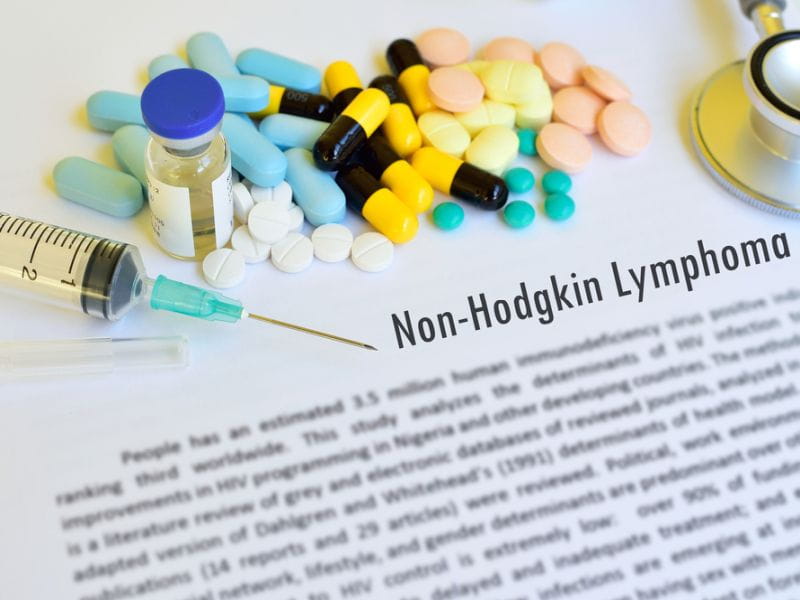
Navigating the landscape of lymphoma treatment costs in India reveals a promising outlook for patients seeking quality care at a fraction of the expense in many Western countries. The country’s healthcare system has made significant strides in recent years, offering a wide range of treatment options, state-of-the-art facilities, and experienced medical professionals.
One of the key advantages of seeking lymphoma treatment in India is its cost-effectiveness. Patients can access world-class medical facilities and highly skilled physicians at a fraction of the price they might pay elsewhere. This affordability extends to various aspects of treatment, including diagnostic tests, surgeries, chemotherapy, radiation therapy, and stem cell transplants. It’s a significant relief for patients and their families who often grapple with the overwhelming financial burden of battling lymphoma.
Moreover, India’s medical infrastructure has grown substantially, resulting in cutting-edge technology and treatment modalities being available. This translates into improved diagnostic accuracy and treatment outcomes. Additionally, many hospitals in India offer comprehensive care under one roof, from initial diagnosis to post-treatment follow-ups, enhancing the convenience and efficiency of the treatment process.
Medical tourism has also contributed to the growth of lymphoma treatment facilities in India. The country welcomes a diverse pool of patients from around the world, fostering a global exchange of medical expertise and best practices. This international exposure has led to a higher standard of care and the incorporation of the latest advancements in lymphoma treatment.
Despite these advantages, it’s essential for patients to carefully research and choose the right healthcare provider to ensure the highest quality of care. Factors such as the hospital’s reputation, the medical team’s expertise, and the facility’s accreditation should be considered.
In conclusion, while battling lymphoma is undoubtedly a challenging journey, the cost-effective, high-quality treatment options available in India have the potential to make this journey more manageable. With the country’s dedication to healthcare innovation and affordability, patients can find hope and healing on their path to recovery. It’s a testament to the progress in healthcare accessibility that India has made in recent years, offering a lifeline to individuals facing the daunting prospect of lymphoma treatment.
A crowdfunding platform offers a lifeline to individuals facing the daunting challenge of covering the high cost of lymphoma treatment in India. Lymphoma is a relentless adversary, and battling it requires not only physical strength but also financial resilience. Lymphoma treatment can be prohibitively expensive. Medical bills, chemotherapy, radiation therapy, and related expenses can quickly drain savings. A crowdfunding platform allows people to pool resources and alleviate the financial burden.
It harnesses the power of collective compassion. Friends, family, colleagues, and even strangers can come together to support someone in their time of need. It’s not just about money; it’s about solidarity and hope.












